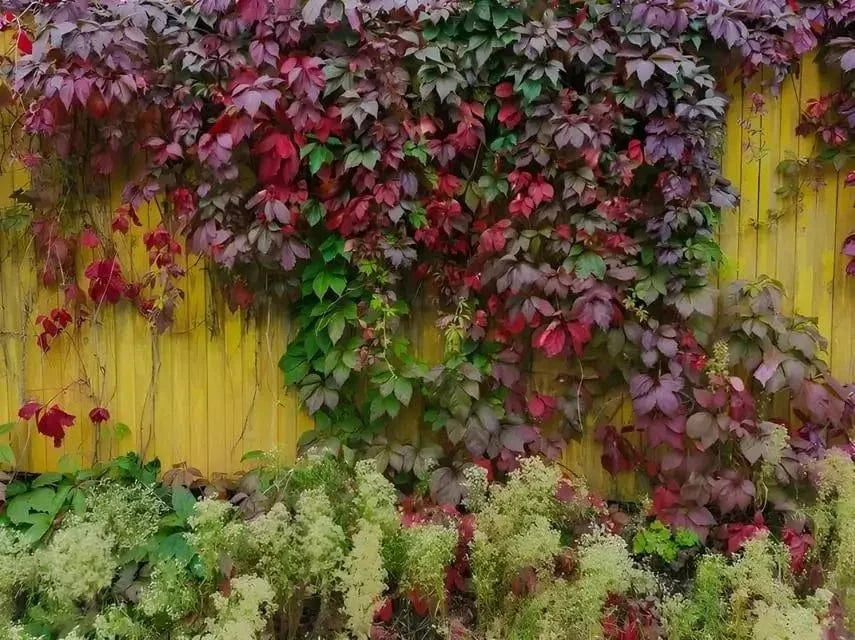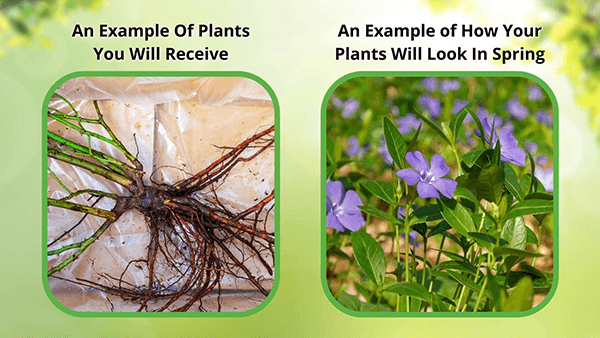Virginia Creeper
Couldn't load pickup availability
Now
Under 12"
Full Sun
3-9
Groundcover
Bare-root
Parthenocissus quinquefolia - Virginia Creeper
Virginia Creeper is a deciduous climbing vine native to eastern and central North America. It is a popular ornamental plant, prized for its beautiful foliage that turns bright red in the fall. In this article, we will discuss the characteristics and benefits of this incredible plant.
Virginia Creeper Physical Characteristics
It can grow up to 50 feet long and has tendrils that allow it to climb trees, walls, and other structures. The leaves are compound, consisting of five leaflets arranged in a palmate pattern. The plant produces small greenish-white flowers in the summer, followed by dark blue berries.
Benefits
A Popular Ornamental Plant Adds Color and Beauty to Any Garden
The plant's vibrant foliage displays reds and oranges in the fall, making it an excellent choice for seasonal interest. The plant's root system helps to stabilize soil and prevent erosion. This makes it an excellent choice for sloped areas or banks where erosion is a concern.
It Is Great For Wildlife
It provides food and shelter for wildlife, including birds and small mammals. The plant's berries are a valuable food source for birds, while the leaves protect insects and other small animals.
This Plant Improves Air Quality
Like all plants, it absorbs carbon dioxide and releases oxygen, helping to purify the air we breathe. This makes it an excellent choice for improving air quality in urban areas. It is a low-maintenance plant that requires minimal care. It is resistant to pests and diseases, making it an excellent choice for busy gardeners.
It is a beautiful and versatile plant with many benefits. It is an excellent choice whether you want to add beauty to your garden, stabilize soil and prevent erosion, provide habitat for wildlife, or improve air quality.
It is a vine with five leaflets per leaf, distinguishing it from poison ivy, which can also be found as a vine in similar habitats. It grows along the ground, like a creeper, or creeps up the trunks of trees, shrubs, fences, or walls.
It is a fast-growing vine, so if you want to control its location, take action early in the season, or the substrate could be damaged when you remove the vines. The vines cling to the trees and walls with tiny adhesive cup-like tips.
Its compound leaflets have toothed margins and range from two to six inches long. While its flowers are small and inconspicuous in late spring, the leaflets turn bright red in the fall. Its tiny fruits are dark blue berries, usually with two or three seeds.
These berries are excellent wildlife food, favored by birds, squirrels, mice, deer, and skunks. The vines offer perches for birds and shelter for small mammals. Birds spread seeds and germinate in the spring.
They prefer acidic soil but are found in many soil types in Eastern and Southeastern American forests and fields. They can also be found in southeastern Canada and northern Mexico. They are not poisonous, but the oxalate in the sap can be an irritant.
This Plant is An Excellent Vine For Soil Erosion
Virginia Creeper is an excellent vine for erosion control on slopes and shady areas. Historically, the bark and roots had medicinal uses.
The easiest way to grow this vine is with cuttings, though you can plant the seeds in the fall, placing them about 3/8 inches deep with about ten seeds per square foot. It rarely needs watering except in a drought, and then it should be watered deeply.
This beautiful and valuable vine will quickly grow to 60 feet high and spread over 50 square feet.
This Is How Your Plants Will Look upon Delivery
Bloom/Foliage Color
White
Shipping date depends on the date displayed and chosen when you order from the product's page.
We do not offer warranties on products after 5 days past receiving your plants.



One of the plants put on leaves soon after the pkg. arrived. It continues to put on leaves and is doing well. No sign of life on other plant.
Received my 20 plants and planted them. To early for results.
I'm going to enjoy thes two unique Ives in the spring of 2024 when they start growing in my yard.
My order was shipped fast and in great shape upon arrival. Thank you so much.
Rene
So very beautiful! It spread around my porch!
Gayle, thank you for your 5 stars! We’re thrilled that you were satisfied with our plants. Your feedback is appreciated, and we hope to be of help again soon!

